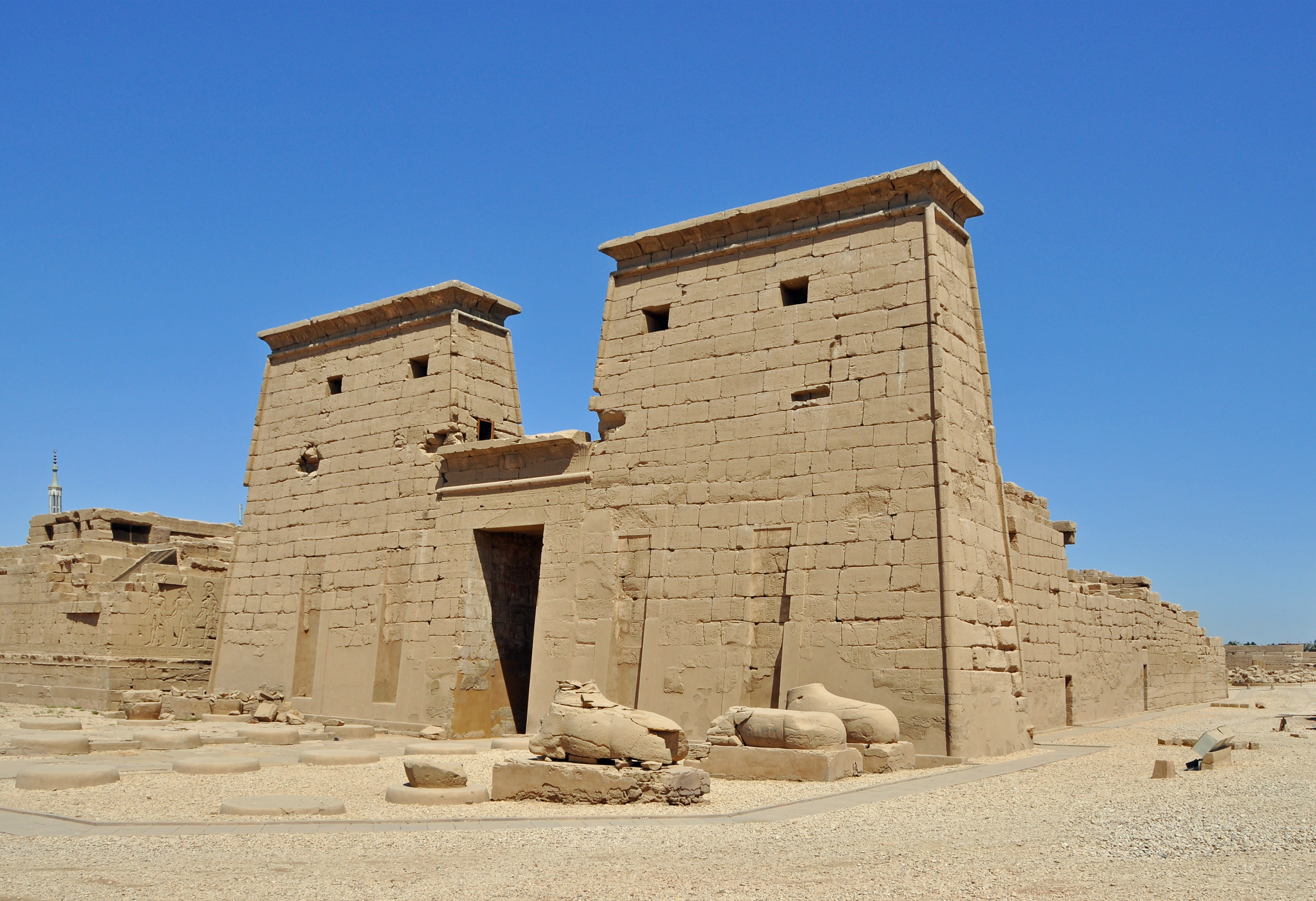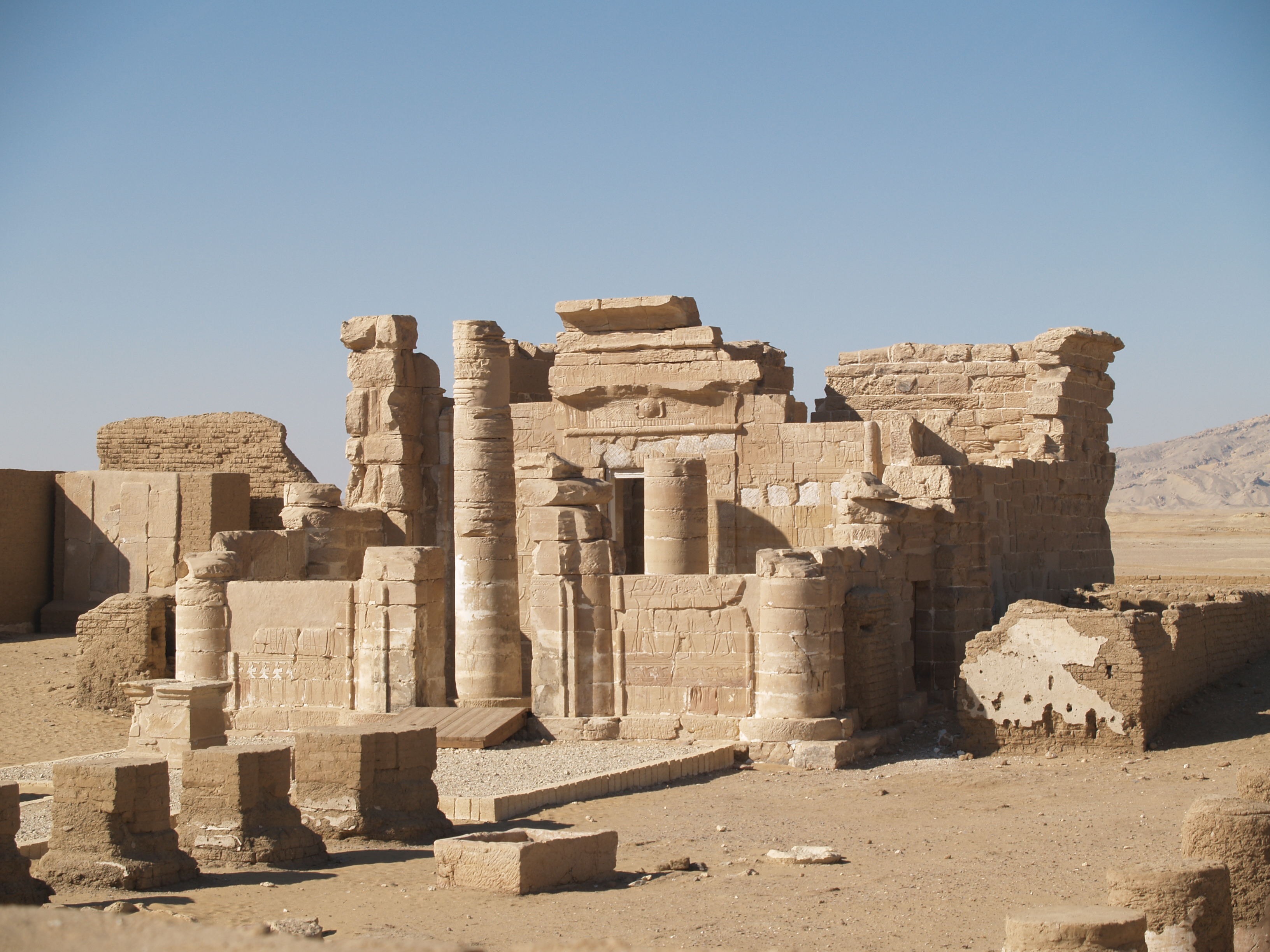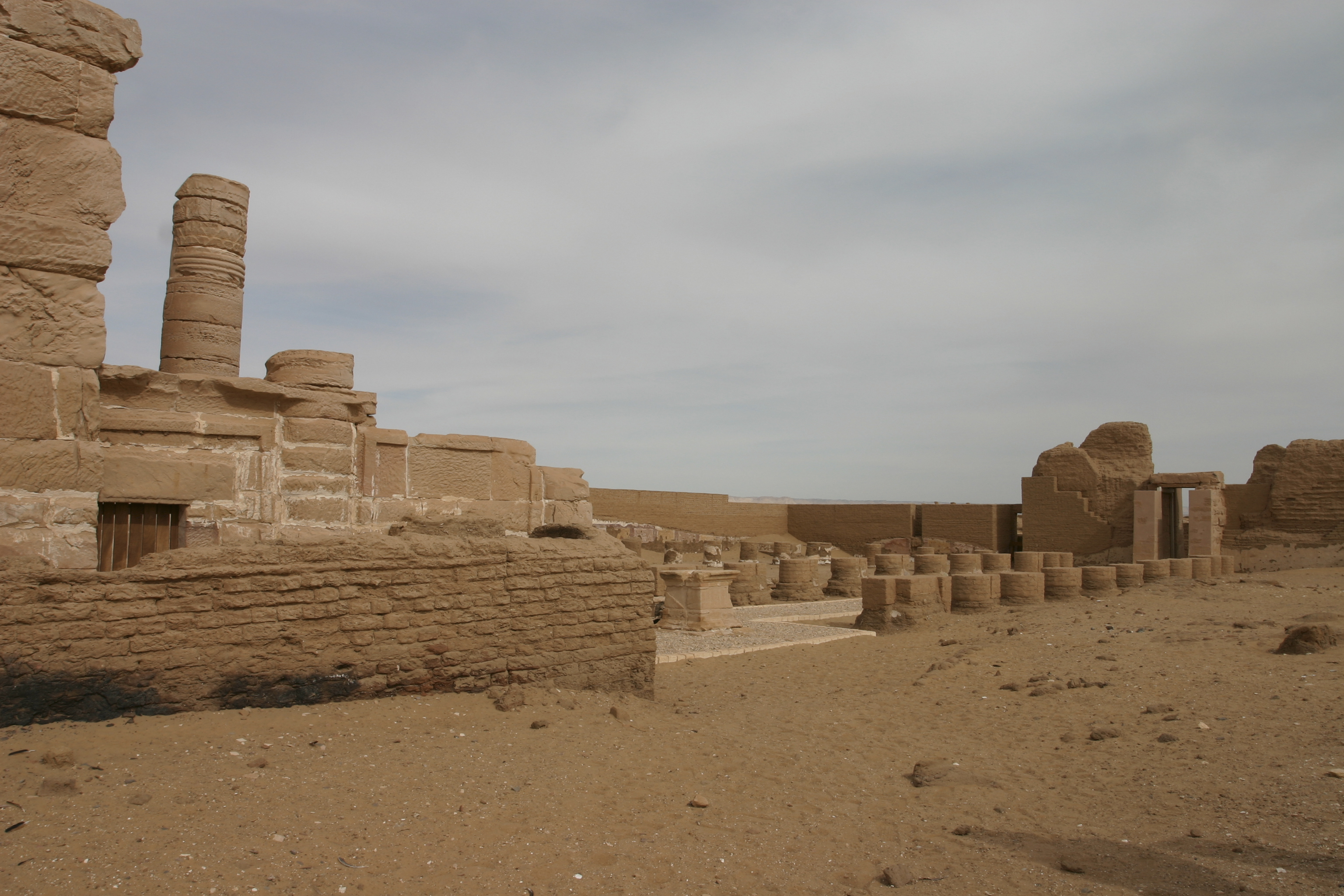Temple of Khons, RAMSES III, Egyptian, KARNAK, Egypt, 1150 BC

Plan, section, and cutaway drawings of the Temple of Khons
The entry to Temple of Khons is the PYLON composed of two tall trapezoidal elements with open entry in the center (image 1). The section drawing best reveals the height difference of the pylon. This partition separates secular space preceding entry from the sacred space behind the pylon. Many linear Egyptian projects lack a vertical emphasis. The pylon is one exception. This vertical element at the entry sequence masks the scale and contents of the temple beyond the pylon and creates a sense of drama and suspense. The pylon also adds to the frontal and hierarchical design of the project, more to be elaborated following.

Image 1: Pylon Entry
The other vertical element at Temple of Khons is an OBELISK, one solid, non-occupiable piece of stone. The obelisk is unique to Temple of Khons, compared to the other Egyptian projects in this book. The obelisk creates an AXIS MUNDI and creates a connection from the heavens to the earth. A reminder, though other topics in this book feature obelisks, the original iteration of obelisks was first created in Egypt. Later, the Classical Romans removed obelisks from Egypt to their most important civic and religious buildings. The third iteration of obelisks was in Rome again when the obelisks were moved to highlight the Baroque Roman Planning and religious buildings.
This organization of the first drawing set shows the section aligning with the plan below. The plan reinforces one clear AXIS along the center organizing a spatial HIERARCHY. Beyond the pylon, the next space is the HYPOSTYLE HALL, a hall full of columns. At Temple of Khons, the first hypostyle hall is both interior and exterior with a voided space in the middle open to the sky. The hypostyle hall is a symbol of Egyptian structural limitations. Though this culture created a vast scale of projects, occupiable interior space did not match exterior grandeur. The hypostyle hall is the desire to create large interior spaces, with or without a roof. The tension of the beams above the columns was a challenge; therefore, the columns were spaced close together with minimal INTERCOLUMNIATION to resolve this issue. As builders evolve further structural sophistications, intercolumniation expands between structure creating more open interiors. The trajectory of limited interior space and limited light that continues to expand throughout history is dependent upon structural innovations (image 2).

Image 2: Ruins showing column structures of temple
One major structural innovation reducing the number of columns is the CAPITAL, the opening at the top of a column. The opening of the column at the top increases surface area and allows more weight to be transferred by each individual column. The importance of the capital is a structural innovation widening the space between and further reducing the number of columns. This creates larger, more open interior spaces. When these structural innovations occur, there are often efforts to create a more pleasing aesthetic. An interesting lineage of this idea is the depiction of vegetative elements on both Egyptian and Greek capitals. The Egyptians return to the river Nile and earlier building materials and plants found at the base of the Nile, including papyrus buds and lotus flowers. They employ these shapes and imagery on the capitals to represent Upper (papyrus buds) and Lower Egypt (lotus flower).
Proceeding past the large scale of the hypostyle hall is a dramatic set of spatial sequences connected by a central axis defining SYMMETRY. The hierarchy of the smaller scale of the SANCTUARY is reinforced by TELESCOPING in both plan and section. At Temple of Khons, the telescoping is decreasing with wall placement, in addition to ceiling height reducing and floor level raising (see section). These effects reinforce a compression to minimal scale of the sanctuary. The stepping of the ceiling height allows for a CLERESTORY light to selectively illuminate the interior. The axonometric at the top of the drawing set shows how the light can slip in between the structural elements.
Temple of Khons was built upon a TABULA RASA, a clean slate. It is an ADDITIVE temple, bringing all materials to the site, a comparison to Temple of Ramesses II. At Temple of Khons, there is a layering of further zones of hierarchy outside of the inner most temple. Several bands of concentric zones demonstrate a layering of hierarchy. There is a clear procession reinforcing the hierarchy of the sanctuary. Of note for all the Egyptian projects, these tremendous building projects required large labor forces for the scale of projects. Often during Egyptian times, towns developed in proximity to these building sites.
As later civilizations build larger interior spaces, each culture develops new sensibilities and distinct characteristics. Later cultures develop techniques to build larger and/or taller, featuring more light illuminating the interior. The scale of Egyptian architecture is SUBLIME, inspiring later civilizations to achieve their monumentality. Today the mysteries of what the Egyptians designed and constructed continues to develop many questions and research to better understand this sophisticated culture (image 3).

Image 3: Ruins of Egyptian architecture
Media Attributions
- Drawings of Temple of Khons is licensed under a Public Domain license
- Image Showing Exterior of Temple of Khonsu © Marc Ryckaert
- Temple of Khons Ruins © Insitute for the Study of the Ancient World is licensed under a CC BY (Attribution) license
- Temple of Khons Ruins © Institute for the Study of the Ancient World is licensed under a CC BY (Attribution) license
an entryway or gateway to the Egyptian temple, generally composed of two trapezoidal shapes with entry in the center
a tall, thin, tapered stone, constructed of one solid piece of stone (no occupiable space within the structure)
a Z axis (in the third dimension) connecting the heavens to the earth, often related to a religious or spiritual connection, though there are exceptions
a hall created by a datum of columns, with or without roof
Spacing between columns. In earlier civilizations, intercolumniation is closer because of the limit of structural innovations. As builders evolve further structural sophistication, intercolumniation expands between structure creating more open interiors.
The top or head of a column. Egyptians decorated capitals to represent vegetation from either Upper (lotus flower) or Lower (papyrus buds) Egypt. The Greeks incorporated acanthus leaves as a vegetative element.
an equal or like reflection about an axis (linear, radial, etc.)
The most hierarchical area of the Egyptian temple, usually smaller in scale. Could be location of altar or religious ceremony, but most likely a space for only the holiest of people to enter.
Space changing in width and/or height, either decreasing or increasing volume of space. Telescoping can occur in either plan with wall placement or section by either floor and/or ceiling position.
the top most horizontal band of the interior façade. Clerestory is one of the most dematerialized areas of the structure with the largest amount of glass. This area allows the most amount of light to enter through the clerestory.
a clean slate; a site that is cleared for a new project or organization
an addition of materials or parts to create the whole
inspiring a feeling of awe, could be by scale, function or effect.
